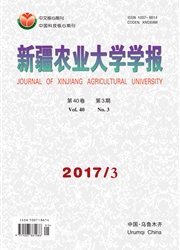

 中文摘要:
中文摘要:
皮棉杂质直接影响棉包定级和棉纺织品品质。国内外学者采用机器视觉等技术,能够有效检测着色较深、面积较大和含有荧光物质的部分棉花杂质。但是,针对纤细、浅色、白色和透明杂质检测效果不佳。因此,该文采用高光谱成像系统获取纤细、浅色、白色及透明异性纤维的棉花高光谱图像,异性纤维包括灰色,白色和透明的丙纶丝、黑色人发、黑色和白色的猪毛、黑色或者透明的聚乙烯地膜碎片。采用主成分分析、独立成分分析、双波段比分析和波长合并四种降维方法,对比其异性纤维分割效果,确定最佳预分割图像。随后,采用Sobel算子边界提取和形态学处理分割这些图像,再采用膨胀和收缩等形态学运算分割出目标区域,最后采用面积单值滤波剔除二进制图像中的噪声点和伪目标区域。统计结果,训练和验证集异性纤维的识别准确度分别为73.2%和75.3%,其中,灰色丙纶丝和黑色毛发的识别率超过93%,白色丙纶丝的精确分割大于80%,结果表明,高光谱图像系统可以准确检测部分浅色、白色和黑色纤细的异性纤维,白色纤细毛发和透明的聚乙烯地膜碎片检测效果较差。
 英文摘要:
英文摘要:
Different types of trash in ginned cotton lint seriously affect the grade of textile materials and the quality of the final woven product. In this work, hyper-spectral imaging operated in reflectance mode in a spectral region from 422 to 982 nm was studied to detect light color, white, colorless and fine foreign materials on the surface of the ginned cotton. The foreign materials include gray, white and transparent polypropylene fiber, black human hair, black and white pig hair, black and transparent PE mulching film. Traditional methods of dimension reduction of hyper-spectral image were applied to obtain the potential images. Image enhancement of medial filter and edge detection based on Sobel operator were initially selected for segmentation of the potential images. Subsequently, ‘dilation’and ‘erosion’morphological operation were carried out to separate the targets from the background. An area filter was finally used to remove noise and small components of suspected non-target in binary images. The overall recognition accuracies for all foreign materials in the training and independent test sets were up to 73.2% and 75.3%, respectively. More than 93% of recognition rate for gray polypropylene fiber and black hairs were achieved. No fewer than 80% of white polypropylene fibers were accurately segmented. Although the recognition rate for transparent polypropylene fibers, transparent PE mulching film, and white pig hair were relatively low, our work starts a new attempt to detect these foreign materials of ginned cotton. The study has shown that the hyper-spectral imaging system can provide more subtle spatial and spectral information for segmentation and recognition of some foreign materials of ginned cotton, like white polypropylene fibers.
 同期刊论文项目
同期刊论文项目
 同项目期刊论文
同项目期刊论文
 期刊信息
期刊信息
